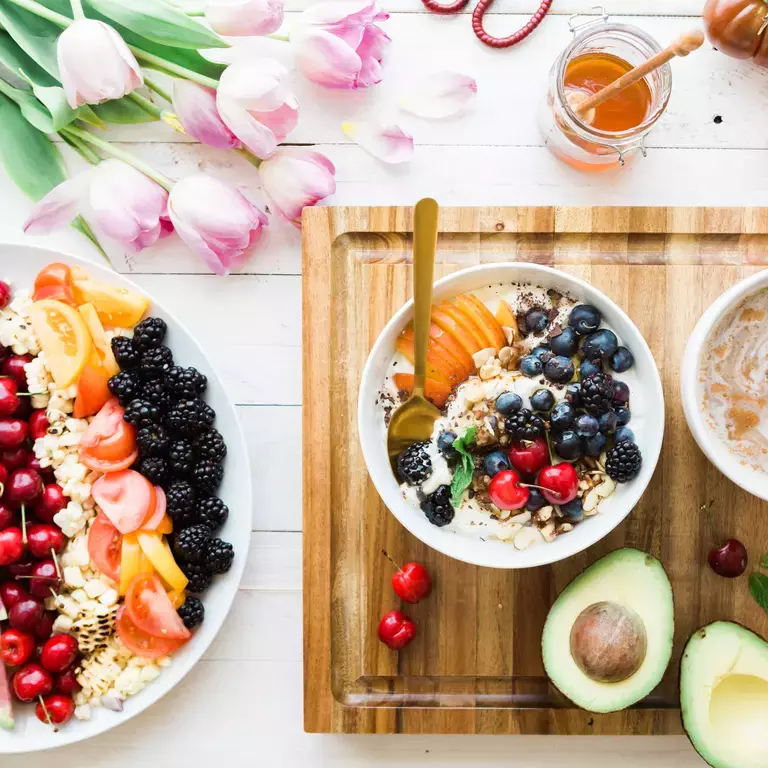In the UK we use The Eatwell Guide to show what types of foods and the proportions which are needed to have a well-balanced and healthy diet.
A balanced diet should include foods from diverse groups, including:
POTATOES, BREAD, RICE, PASTA OR OTHER STARCHY CARBOHYDRATES
Starchy carbohydrate foods should make up around a third of the food we eat and we should base our meals around these foods. We should choose whole grain, higher fibre or brown varieties where possible.
Whole grains are an important part of a healthy balanced diet. They provide us with a range of vitamins, minerals, fibre, starch and other nutrients. Luckily you can have the most delicious meals by adding whole-grain superstars such as whole corn, whole oats, brown rice or porridge to your recipes. At Nestlé Breakfast Cereals we understand that whole grain fibre is recommended as an important part of a varied, balanced diet. So, we’ve added a bold, bright green banner with the whole grain tick on our cereal packs to help you identify the cereal containing at least 8 grams of whole grain in each serving, including SHREDDIES® Original and Multigrain CHEERIOS®.
Fruits and vegetables
We should aim to eat at least five portions of a variety of fruit and vegetables each day, Fruit and vegetables provide us with essential vitamins and minerals as well as fibre making them a key addition to a balanced diet.
Aim to add a variety of fruits to your breakfast and snacks, including high-fibre choices such as apples, strawberries, bananas and pears. You can find out more about what fibre is and why it’s important for healthy eating with our handy article.
DAIRY AND DAIRY ALTERNATIVES
A balanced diet should also include milk and other dairy foods. These are good sources of protein, vitamins and calcium for healthy bones. Plus, milk or yoghurt makes a wonderful combination with breakfast cereals and fruits. Look out for lower fat and lower sugar products where possible. If you’re including dairy alternatives, choose fortified options with additional calcium.
BEANS, PULSES, FISH, EGGS, MEAT AND OTHER PROTEINS
This food group provides us with protein, vitamins and minerals so we should aim to include a variety of different protein foods in our diets. Pulses such as beans, peas and lentils are good alternatives to meat as they are lower in fat and higher in fibre.
UNSATURATED OILS AND SPREADS
We do need some fat in our diet however we should choose unsaturated oil and spreads and eat these in smaller amounts. Unsaturated fats are usually from plant sources and include things like olive oil, rapeseed oil, avocado, and nuts, seeds and nut butter.













